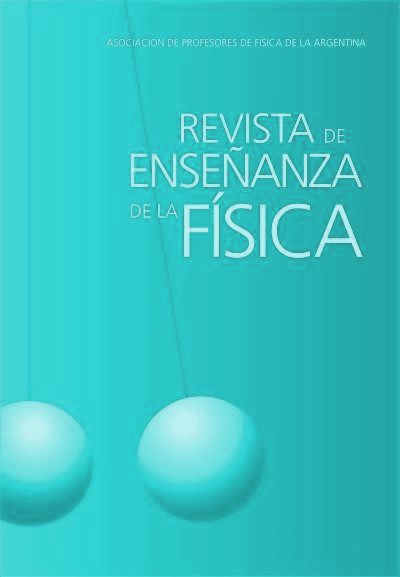Topics and trends in physics teaching using artificial intelligence
Keywords:
Machine learning, Information and communication technology, Quantitative analysis, Literature reviewAbstract
This study investigates the application of machine learning, specifically using the Latent Dirichlet Allocation algorithm, to identify topics and trends in academic journals on Physics education in the Latin America context. The journals analyzed were the Revista Brasileira de Ensino de Física (RBEF) and the Revista de Enseñanza de la Física (REF), covering the period from 2001 to 2022. A total of 1664 articles from RBEF and 885 from REF were collected, representing 79% and 85% of the articles published in these periods, respectively. The results indicated dominant topics in each journal and their respective trends over time. For instance, RBEF showed a decline in topics related to Physics Education and an increase in publications on General Physics. In contrast, REF displayed a predominance of topics related to Teaching, with a significant rise in publications about Virtual Laboratory and Teaching. These findings provide valuable insights into the evolution of research themes in Physics education in the Brazilian and Argentine contexts and the potential of using machine learning in Physics education research.
References
Bird, S. (2016). Natural language processing with python. O’Reilly Media.
Blei, D. M., Ng, A. Y. & Jordan, M. I. (2003). Latent Dirichlet Allocation. J. Mach. Learn. Res., 3, 993–1022.
Carter, L. (2008). Sociocultural influences on science education: innovation for contemporary times. Science Education, 92(1), 165-181. DOI: 10.1002/sce.20228
Chen, X., Zou, D., Cheng, G. & Xie, H. (2020). Detecting latent topics and trends in educational technologies over four decades using structural topic modeling: A retrospective of all volumes of Computers & Education. Computers & Education, 151, 103855. DOI: 10.1016/j.compedu.2020.103855
Chollet, F. (2018). Deep learning with Python. Manning Publications.
Fontes, D. T. M. y Rodrigues, A. M. (2022). Tendencias de investigación en la enseñanza de la física en revistas académicas iberoamericanas. Revista De Enseñanza De La Física, 34(2), 33–45. DOI: 10.55767/2451.6007.v34.n2.39481
Goulart, B. N. K., Pastorio, D. P. e Vidmar, M. P. (2023). O papel do professor diante das tecnologias digitais de informação e comunicação no contexto do ensino remoto emergencial de Física e Ciências. Revista De Enseñanza De La Física, 35(1), 17–26. DOI: 10.55767/2451.6007.v35.n1.41387
Mitchell, R. E. (2018). Web scraping with Python: Collecting more data from the modern web (Second edition). O’Reilly Media.
Mitchell, T. M. (1997). Machine Learning. McGraw-Hill.
Odden, T. O. B., Marin, A. & Caballero, M. D. (2020). Thematic analysis of 18 years of physics education research conference proceedings using natural language processing. Physical Review Physics Education Research, 16(1), 010142. DOI: 10.1103/PhysRevPhysEducRes.16.010142
Odden, T. O. B., Marin, A. & Rudolph, J. L. (2021). How has Science Education changed over the last 100 years? An analysis using natural language processing. Science Education, 105(4), 653–680. DOI: 10.1002/sce.21623
Röder, M., Both, A. & Hinneburg, A. (2015). Exploring the Space of Topic Coherence Measures. Proceedings of the Eighth ACM International Conference on Web Search and Data Mining, 399–408. DOI: 10.1145/2684822.2685324
Syed, S. & Spruit, M. (2017). Full-Text or Abstract? Examining Topic Coherence Scores Using Latent Dirichlet Allocation. 2017 IEEE International Conference on Data Science and Advanced Analytics (DSAA), 165–174. DOI: 10.1109/DSAA.2017.61
Downloads
Published
Issue
Section
License

This work is licensed under a Creative Commons Attribution-NonCommercial-NoDerivatives 4.0 International License.
Aquellos autores/as que tengan publicaciones con esta revista, aceptan los términos siguientes:Los autores/as conservarán sus derechos de copiar y redistribuir el material, bajo los términos estipulados en la Licencia de reconocimiento, no comercial, sin obras derivadas de Creative Commons que permite a terceros compartir la obra bajo las siguientes condiciones:
- Reconocimiento — Debe reconocer adecuadamente la autoría, proporcionar un enlace a la licencia e indicar si se han realizado cambios. Puede hacerlo de cualquier manera razonable, pero no de una manera que sugiera que tiene el apoyo del licenciador o lo recibe por el uso que hace.
- NoComercial — No puede utilizar el material para una finalidad comercial.
- SinObraDerivada — Si remezcla, transforma o crea a partir del material, no puede difundir el material modificado.
- Los autores/as podrán adoptar otros acuerdos de licencia no exclusiva de distribución de la versión de la obra publicada (p. ej.: depositarla en un archivo telemático institucional o publicarla en un volumen monográfico) siempre que se indique la publicación inicial en esta revista.
- Se permite y recomienda a los autores/as difundir su obra a través de Internet (p. ej.: en archivos telemáticos institucionales o en su página web) antes y durante el proceso de envío, lo cual puede producir intercambios interesantes y aumentar las citas de la obra publicada. (Véase El efecto del acceso abierto).










